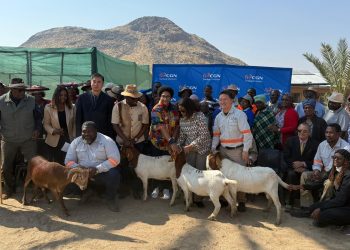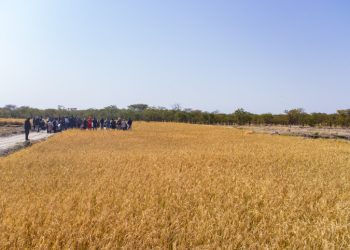
A Norwegian company, African Aquaculture Company (AAC), is set to establish a salmon farming project in the Lüderitz area of Namibia’s //Kharas Region.
The venture aims to generate a staggering N$20 billion in annual turnover when fully operational, while also creating employment opportunities and promoting sustainable aquaculture practices.Â
The company appointed LM Environmental Consulting in March 2023 to undertake an Environmental Assessment for the proposed project.Â
“Once approved by the Executive Director of the Ministry of Fisheries and Marine Resources, and the Directorate of Environmental Affairs and Forestry of the Ministry of Environment, Forestry and Tourism, in the form of an Environmental Clearance Certificate (ECC) with the application still pending after it was submitted in April 2023,” a draft environmental impact study said.Â
According to the study, AAC’s primary objective is to develop a sustainable fish farming operation in the cold waters of the Benguela Current.Â
By leveraging the expertise gained from Norwegian aquaculture, the company plans to employ advanced technology to ensure optimal growth conditions and a thriving economy.Â
Furthermore, the study reveals that the project aims to produce up to 100,000 tonnes of Atlantic salmon through a combination of offshore and onshore facilities located in the Lüderitz area.Â
“The Norwegian Salmon Industry’s statistics suggest that achieving an annual production level of 100,000 tonnes could result in the creation of 15,000 to 20,000 new jobs, both directly and indirectly. This development would significantly contribute to the local economy and generate an estimated annual turnover of N$20 billion,” the study reveals.Â
To bring this ambitious project to fruition, AAC plans to invest approximately N$8.5 billion with the initial offshore pilot phase requiring an investment of N$100 million and a subsequent N$1,250 million allocated for the full-field offshore development.Â
“The latter involves a production capacity of 50,000 tonnes spread across three sites, including the necessary infrastructure such as cages, mooring systems, and operations barges. Additionally, a well boat will be utilized to transport the fish from the offshore facilities to the mainland,” the study noted.Â
Meanwhile, the offshore production of Atlantic salmon will take place at three sites, each measuring 16 square kilometers (1,600 hectares) in size.Â
“These locations, known as AAC-I, AAC-II, and AAC-III, will feature standard large cages equipped with seal- and bird-protection mechanisms. Depending on future met ocean conditions, the implementation of submersible cages, such as the Nautilus by Akva Group, may be considered.”Â
The project will be executed in phases to carefully assess and mitigate any potential environmental impacts.
According to the LM Environmental Consulting study, an initial offshore pilot phase, focusing on the production of 1,000 tonnes, will be followed by step-by-step expansions of production, ultimately reaching the target of 50,000 tonnes.Â
“In addition to offshore production, AAC plans to produce 50,000 tonnes of Atlantic salmon annually at an onshore location south of Diaz Point. This facility will consist of around 30 flow-through basins, with water being pumped from offshore through large diameter pipes or underground tunnels,” the study reveals.Â
The proposed onshore location is projected to span an area of 500 x 800 metres (40 hectares).Â
However, the development of this site will be subject to a new Environmental Assessment or an addendum to the existing assessment, ensuring that all potential impacts are considered and addressed appropriately.Â
AAC’s venture in Namibia marks an important milestone in the country’s aquaculture industry. With the expertise brought in by Norwegian professionals and the utilisation of advanced technology, the project has the potential to significantly contribute to job creation, economic growth, and sustainable fish farming practices in the region.
Â
Â
Â
Â
Â
Â
Â











